 Trent University student from the Applied Biomonitoring class using the kick and sweep method for benthic collection (Joshua Solti, 2021)
Trent University student from the Applied Biomonitoring class using the kick and sweep method for benthic collection (Joshua Solti, 2021)
Benthic Biomonitoring
Benthic macro-invertebrates, colloquially referred to as “benthics” or “benthos”, are spineless aquatic organisms that live on the bottom of water bodies or in the sediment. Since the late 1980’s, they have been used as biological indicators for common aquatic pollutants as they spend part or the entirety of their lives in the water. Due to this long-term contact with the water around them, certain groups of benthics are more sensitive to stressors such as organic pollution (including excess phosphorus and nitrogen). This makes the presence or absence of certain groupings of benthics indicative of the overall ecological health of the water body in which they reside. The use of benthics as an indicator of water quality has been widely used in Ontario since the early 2000's and is gradually being used throughout the world.
In 2019, U-Links, Trent University, and Sir Sandford Fleming College participated in a pilot project involving six lakes within Haliburton County in order to determine if a program like this was possible. All six projects were successful and it was determined in early 2020 that the program would expand to more lakes throughout the Haliburton region. Our program currently works with 14 lake, cottage, and property owners’ associations in the Haliburton and Kawartha Lakes region sampling 65 sites.
Benthic macro-invertebrates, colloquially referred to as “benthics” or “benthos”, are spineless aquatic organisms that live on the bottom of water bodies or in the sediment. Since the late 1980’s, they have been used as biological indicators for common aquatic pollutants as they spend part or the entirety of their lives in the water. Due to this long-term contact with the water around them, certain groups of benthics are more sensitive to stressors such as organic pollution (including excess phosphorus and nitrogen). This makes the presence or absence of certain groupings of benthics indicative of the overall ecological health of the water body in which they reside. The use of benthics as an indicator of water quality has been widely used in Ontario since the early 2000's and is gradually being used throughout the world.
In 2019, U-Links, Trent University, and Sir Sandford Fleming College participated in a pilot project involving six lakes within Haliburton County in order to determine if a program like this was possible. All six projects were successful and it was determined in early 2020 that the program would expand to more lakes throughout the Haliburton region. Our program currently works with 14 lake, cottage, and property owners’ associations in the Haliburton and Kawartha Lakes region sampling 65 sites.
|
|
 Measuring tree diameter at breast height (DBH) with a DBH tape (Joshua Solti, 2021)
Measuring tree diameter at breast height (DBH) with a DBH tape (Joshua Solti, 2021)
Terrestrial Biomonitoring
The landscape of Haliburton County is equally as important as the aquatic ecosystems that are connected to it. In conjunction with the Haliburton Highlands Land Trust (HHLT) and the Haliburton Forest & Wild Life Reserve (Haliburton Forest), U-Links will be coordinating a number of terrestrial monitoring projects starting with vegetation monitoring. Over the summer of 2021 U-Links will be assisting in the creation of a number of permanent sampling plots (PSP) on the properties of the HHLT and Haliburton Forest. These plots will be sampled by Trent University students every five years in order to assess how stressors like climate change are impacting these incredibly important ecosystems.
In the fall of 2021 the Trent University Applied Biomonitoring class, along with U-Links staff, took to the Dahl Forest to create brand new PSPs. While there, they completed the first round of sampling which includes measuring tree species, height, diameter as well as recording any defects on the trees. This data was later used to calculate parameters such as basal area.
Students who are interested in assisting with this portion of the program are encouraged to get in contact with our Environmental Program Coordinator to learn more. This portion of the program is only in it’s first year so updates will occur frequently.
The landscape of Haliburton County is equally as important as the aquatic ecosystems that are connected to it. In conjunction with the Haliburton Highlands Land Trust (HHLT) and the Haliburton Forest & Wild Life Reserve (Haliburton Forest), U-Links will be coordinating a number of terrestrial monitoring projects starting with vegetation monitoring. Over the summer of 2021 U-Links will be assisting in the creation of a number of permanent sampling plots (PSP) on the properties of the HHLT and Haliburton Forest. These plots will be sampled by Trent University students every five years in order to assess how stressors like climate change are impacting these incredibly important ecosystems.
In the fall of 2021 the Trent University Applied Biomonitoring class, along with U-Links staff, took to the Dahl Forest to create brand new PSPs. While there, they completed the first round of sampling which includes measuring tree species, height, diameter as well as recording any defects on the trees. This data was later used to calculate parameters such as basal area.
Students who are interested in assisting with this portion of the program are encouraged to get in contact with our Environmental Program Coordinator to learn more. This portion of the program is only in it’s first year so updates will occur frequently.
